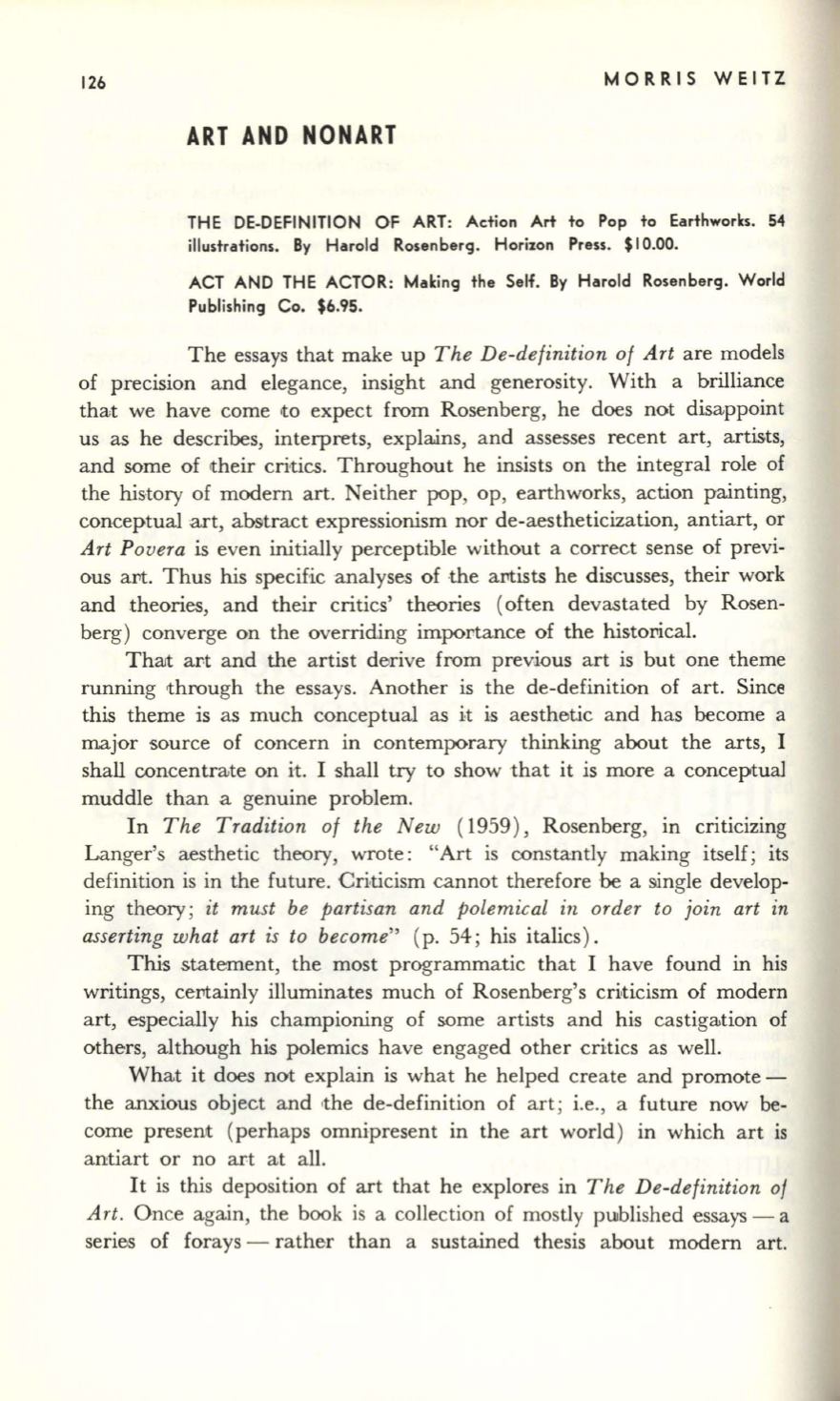
12b
MORRIS WEITZ
ART AND NONART
THE DE-DEFINITION OF ART: Action Art to Pop to Earthworks. 54
illustrations.
By
Harold Rosenberg . Horizon Press. $10.00.
ACT AND THE ACTOR: Making the Self.
By
Harold Rosenberg. World
Publishing
Co.
$b.95.
The essays that make up
The De-definition of Art
are models
of precision and elegance, insight and generosity. With a brilliance
that we have come <to expect from Rosenberg, he does not disappoint
us as he describes, interprets, explains, and assesses recent art, artists,
and some of their critics. Throughout he insists on the integral role of
the history of modern art. Neither pop, op, earthworks, action painting,
conceptual art, abstract expressionism nor de-aestheticization, antiart, or
Art Po vera
is even initially perceptible without a correct sense of previ–
ous apt. Thus his specific analyses of the al1tists he discusses, their work
and theories, and their critics' theories (often devastated by Rosen–
berg) converge on the overriding impoI1tance of the histol1ical.
Thalt art and the artist derive from previous art is but one theme
running through the essays. Another is the de-definition of art. Since
this theme is as much conceptual as it is aesthetic and has become a
major source of concern in contemporary thinking about the arts, I
shall concentrate on it. I shall try to show that it is more a conceptual
muddle than a genuine problem.
In
The Tradition of the New
(1959), Rosenberg, in criticizing
Langer's aesthetic theory, wrote: "Art is constantly making itself; its
definition is in the future. Criticism cannot therefore ·be a single develop–
ing theory;
it must be partisan and polemical in order to join art in
asserting what art is to become"
(p. 54; his italics).
This statement, the most programmatic that I have found in his
writings, cel1tainly illuminates much of Rosenberg's criticism of modern
art, especially his championing of some artists and his castigation of
others, although his polemics have engaged other cri:tics as well.
What it does not explain is what he helped create and promote–
the anxious object and .the de-definition of art; i.e., a future now be–
come present (perhaps omnipresent in the art world) in which art is
antiart or no art at all.
It
is this deposition of art that he explores in
The De-definition of
Art.
Once again, the book is a collection of mostly pUiblished essays - a
series of forays - rather than a sustained thesis about modern art.


